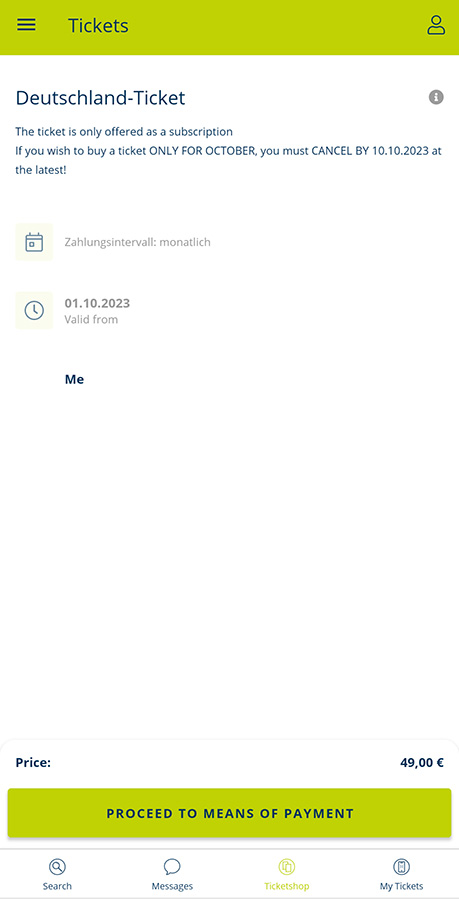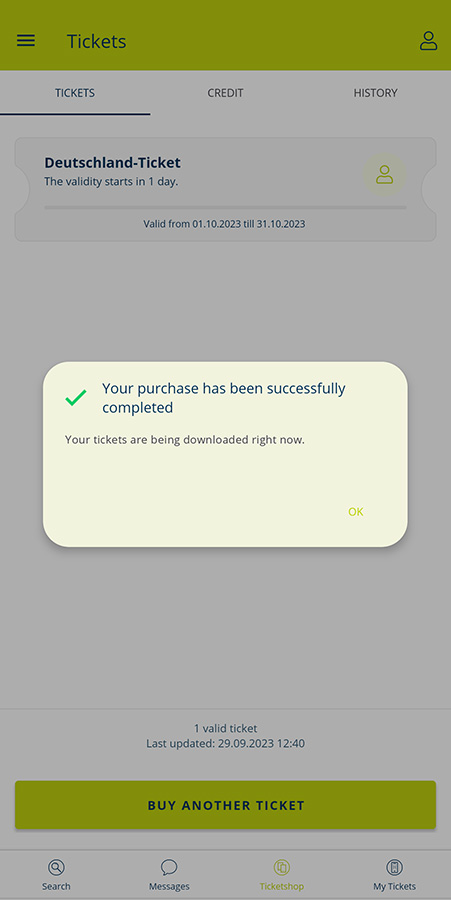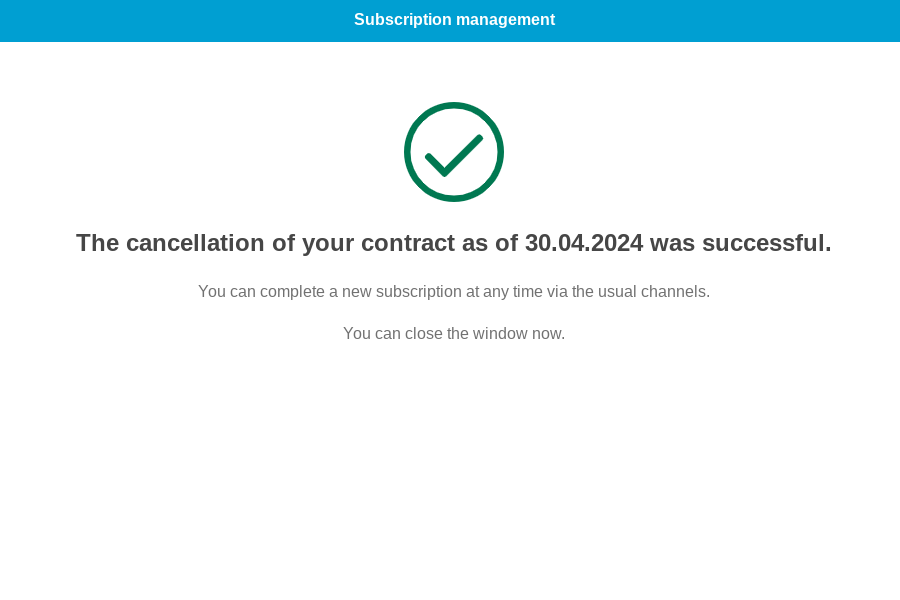Once upon a time, using public transit when traveling could be a nightmare. What ticket do you need? Are you in the right fare zone (or zones)? How long is the ticket good for? Is it good for one person, or is it a group ticket? And that’s all before you even consider how to get from Point A to Point B. Luckily, in 2023, Germany eliminated some of the stress with the new monthly subscription Deutschland-Ticket.
Germany’s Deutschland-Ticket is a monthly travel pass that provides unlimited use of local and regional public transportation for just €58. Originally launched at €49, this pass is available to both tourists and residents, making it one of the best travel deals in Europe. Here’s how it works, how to buy it, and how to know if it’s right for your trip.
Quick Facts About the Deutschland-Ticket
✅ Price: €58/month (originally €49)
✅ Valid on: Regional trains (RB, RE), S-Bahn, U-Bahn, buses, trams
❌ Not valid on: Long-distance trains (ICE, IC, EC), FlixTrain, or FlixBus
✅ Available to: Tourists and residents
✅ Best for: Longer stays or frequent regional/local travel
✅ Where to buy: Transit apps like MVV or Deutsche Bahn (some accept foreign credit cards)
⚠️ Cancellation: Must be canceled by the 10th of the month to stop renewal
What is the Deutschland-Ticket?
The Deutschland-Ticket, or D-Ticket, is a monthly subscription ticket valid for all local and regional public transit in Germany. It can be used on RB, RE, S-Bahn, U-Bahn, buses, and trams. It can’t be used on the typically quicker long-distance trains (IC, EC, and ICE) or other long-distance services like FlixTrain or FlixBus.
The ticket is a monthly subscription that will automatically renew if not canceled by the 10th day of the prior calendar month. It’s valid for a single calendar month (e.g., from July 1st to July 31st). There are two versions of the ticket, one is digital (Handyticket) and one is a physical card with a chip. For tourism, the physical card is less convenient because it has to be mailed to your home.
Pros and Cons of the D-Ticket for Tourists
As a tourist, there are a lot of factors to take into consideration when deciding if the D-Ticket makes sense for your trip.
First, how long will you be in Germany and how often will you be traveling using public transit? If it’s a week or less, you probably won’t be using public transit enough for the D-Ticket.
Next, determine if the cost of the D-Ticket is worth it. Draft a list of potential tickets you would buy on your trip and the cost. For example, if you’re traveling from the airport, those tickets tend to be more expensive and can make the D-Ticket a worthwhile investment.
Deutsche Bahn offers various regional tickets designed for day trips or short getaways, providing a great way to save money. For example, the Bayern-Ticket offers unlimited public transit travel for up to five people. The price starts at €27 for one person and increases for each additional person.
Before purchasing a D-Ticket, it’s worth considering these regional tickets depending on your needs. One of the major differences is that regional tickets have time limitations. The Bayern-Ticket, for example, can only be used on weekdays from 9 a.m. until 3 a.m. the following day and from midnight to 3 a.m. on weekends. If you prefer an earlier start on weekdays, the D-Ticket may make more sense.
Another benefit of the D-Ticket is that it eliminates the need to predict what fare zone(s) you may need to purchase. While you might intend to spend your trip in the city center, on a whim, you can take public transit out of downtown or even to a neighboring town. With the D-Ticket, you can do that without worry or extra cost.
There are, of course, negatives to the ticket. As with any digital ticket, if your cellphone or mobile device runs out of battery and you can’t present your ticket to an inspector, you will be fined.
It’s also worth noting that the Deutschland-Ticket is a monthly subscription. When you no longer need the ticket, you need to cancel it, or you will continue to be charged the monthly €58 cost. And to add to the complications, you need to know ahead of time when you will no longer need the ticket. Cancelations must be made by the 10th day of the month. (For example, if you only need the ticket through the end of January, you need to cancel by January 10th.)
How to Buy the Deutschland-Ticket
Once you decide that the Deutschland-Ticket is right for you, it is easy to both sign up for the ticket and cancel it.
You can buy a digital ticket (or Handyticket) from any transit authority in Germany: such as Deutsche Bahn, BVG in Berlin, or MVV in Munich. But because the ticket is national, and not regional, the transit authority from which you buy it is irrelevant to where you will use it. For example, you can buy the ticket from Munich’s MVV and use the ticket in Hamburg.
For international tourists, the issue is that not all transit authorities accept credit card payments. Based on my experience, I recommend using Munich‘s MVV app to buy and use the ticket. The app accepts foreign credit card payments and cancellation was simple and easy.
First, download the MVV app onto your mobile device. In the app, create a ticket shop account or log in if you already have one. Then, in the ticket shop, buy the “Deutschland-Ticket.” Add the rider who will use the ticket and select the month when you want the ticket subscription to start. Then pay for the ticket and you’re ready to ride!
How to Use the Deutschland-Ticket
Once you have your D-Ticket, you’re free to use all applicable local public transit. Really. It’s that easy.
As is standard in Germany, transit tickets and passes are not typically reviewed or scanned before every ride. Instead, you may be asked at any time by a ticket inspector (Fahrkartenkontrolleur) to show a valid ticket. It’s also not uncommon for buses in areas that service local attractions to request riders to show a valid ticket upon getting on the bus.
When using the digital version of the ticket, a Wi-Fi connection should not be necessary. The ticket should be saved on your phone. If you need to present the ticket to an inspector, open the app and bring up the ticket. Be sure to have identification, too. Tickets are associated with the name on the ticket and are not transferable.
How to Cancel the Deutschland-Ticket
When you subscribe and buy your Deutschland-Ticket, you will receive several emails, including a confirmation and receipt. Be sure to save the confirmation email, which contains a link for canceling the ticket. When you’re ready to cancel the ticket, simply click on the link in the email and follow the instructions. Remember, the ticket must be canceled by the 10th day of the month.
The easiest way to cancel is by using the direct link in your confirmation email. If you can’t find the email, log in to your account on the app or website where you purchased the ticket (such as the MVV app) and navigate to the subscription management section to process the cancellation.
FAQs About the Deutschland-Ticket
Can I use the Deutschland-Ticket on ICE trains?
No, the Deutschland-Ticket can’t be used on the typically quicker long-distance trains (IC, EC, and ICE) or other long-distance services like FlixTrain or FlixBus.
Can tourists use the Deutschland-Ticket?
Yes, the ticket is available to tourists and non-residents.
Do I have to cancel the Deutschland-Ticket?
Yes, the Deutschland-Ticket is a monthly subscription that will automatically renew if not canceled. Cancellations must be made by the 10th day of the month. If you no longer need the ticket, you must cancel it or you will continue to be charged.
Is the ticket valid for a calendar month or 30 days from purchase?
The Deutschland-Ticket is a monthly subscription valid for a calendar month. When purchasing, you select the month when you want the ticket subscription to start.
Can my friend use my ticket? Is it transferable?
No, the ticket is not transferable. It is associated with the name on the ticket, and you must also present identification.
Do I need internet access or Wi-Fi to show my digital ticket?
A Wi-Fi connection should not be necessary to present your ticket. The ticket should be saved on your phone.
What is the best way for a tourist to buy the Deutschland-Ticket?
For international tourists, using Munich’s MVV app is recommended because it accepts foreign credit card payments and the cancellation process is simple. While you can buy the ticket from any transit authority, not all of them accept payment with credit cards.
Traveling in Germany? Save this guide to the Deutschland-Ticket on Pinterest so you’ll have all the tips you need on the go.
The Deutschland-Ticket can be a fantastic deal for the right kind of trip. Are you planning on using it for your travels in Germany? Share your plans or questions in the comments below!
All photos, as well as opinions, are my own. This post contains affiliate links.





Thanks for your post, Corinne. I’ve been considering getting a free Wise account to get an IBAN code to match up with European banks, but it’s great to see others find success using apps from regional transport-authorities, especially with credit-cards from outside the E.U. and specifically cards from North American banks.